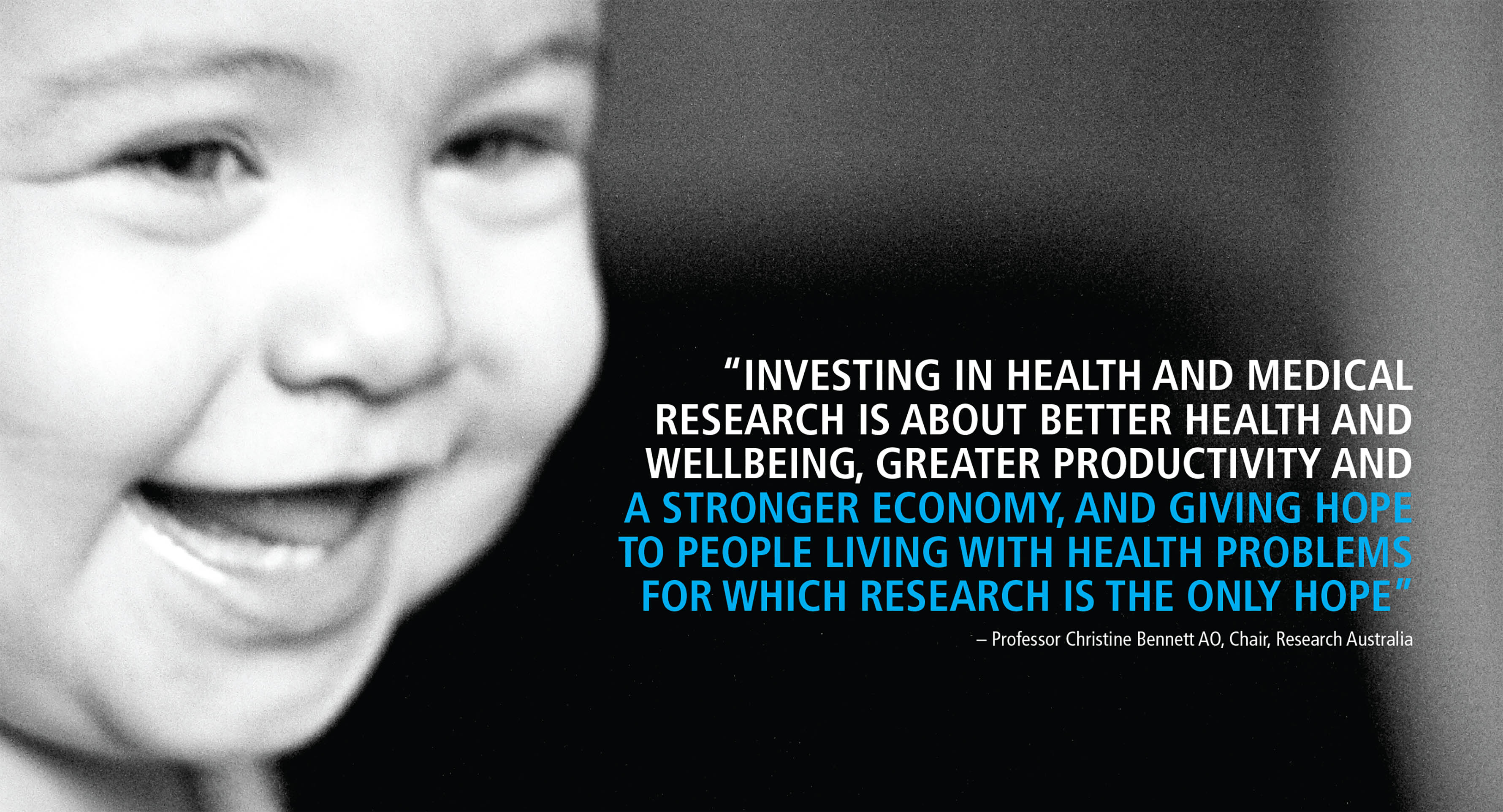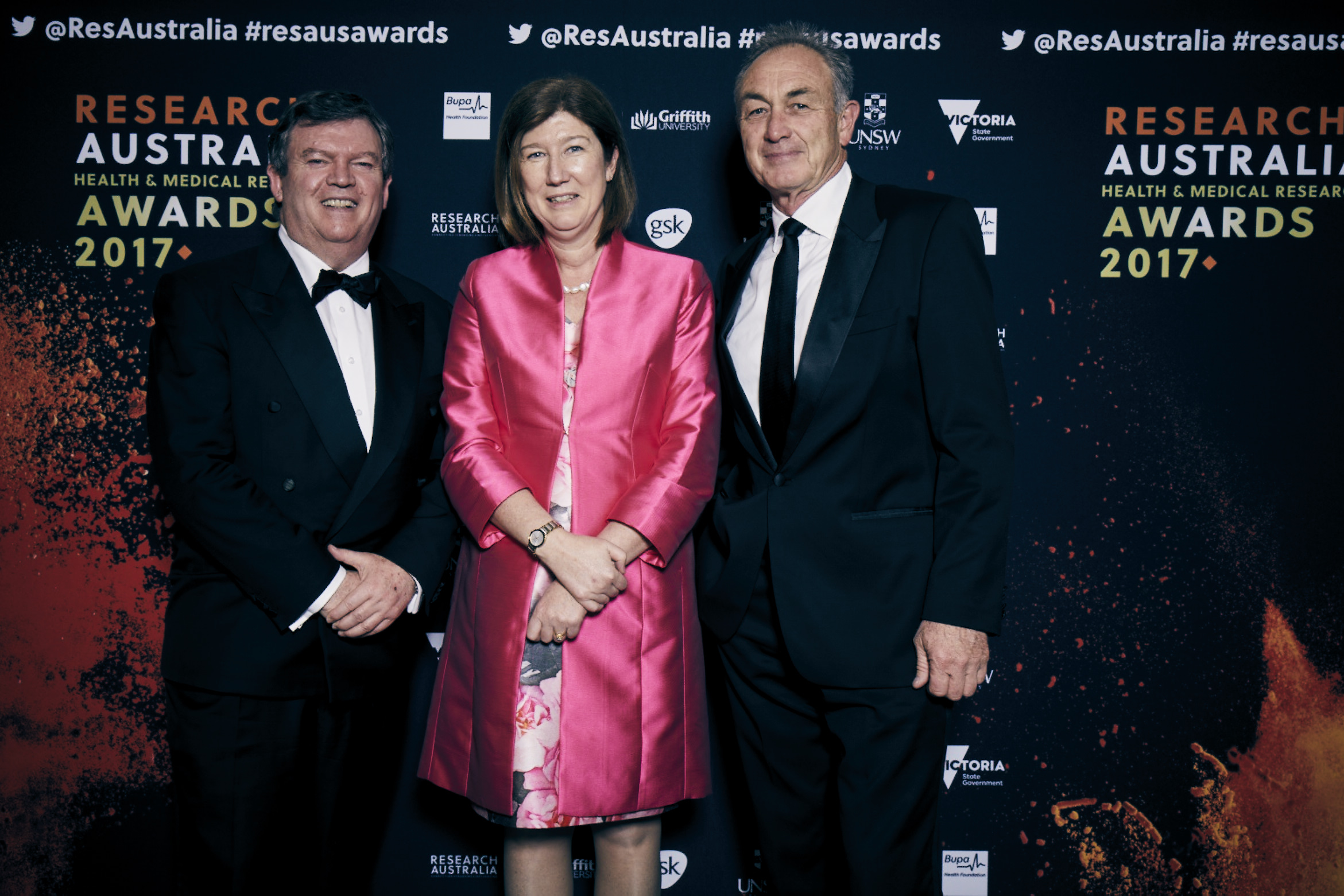Media Release: Monday 6 June, 2016
A new report from the health and medical sector says the Medical Research Future Fund (MRFF) needs to prioritise closing gaps between health research, health practice and the health economy.
Translating Research for a sustainable future comprehensively brings together the positions of 160 of Australia’s leading health and medical research organisations, companies and personnel.
The review, contributed to by prominent researchers, universities, and businesses in the field, outlines the sector’s view on priorities for the MRFF over the next two and five years.
It has been presented to, amongst others, the offices of the Prime Minister, Opposition Leader and Greens Leader, the Chief Scientist and Health Ministers across the country, to inform policy-making.
“Australia has a world-leading research, and a world-class health system, but too often they operate in isolation,” said Research Australia CEO, Nadia Levin.
“The Medical Research Future Fund is the opportunity of a generation to bridge the gaps, and bring what happens in the lab together with what happens in clinical practice, and vice versa.”
“This report is from the experts in health and medical research and policy, and is designed to inform the Federal Government on the best direction of the MRFF.”
Research Australia believes that in its formative years, the Fund should have overarching strategic goals that ensure dual focuses of health and wellbeing, and economic prosperity:
- Health and Wellbeing: fund projects with clearly identified goals that will, if achieved, lead to better health and wellbeing through the translation of research into new clinical practices, health policy, products and services.
- Economic Prosperity: fund programs that support the commercialisation of Australian HMR to grow GDP; help contain health expenditure through using evidence-based practice to make the health system more efficient; and minimise the opportunity cost associated with the practice of research.
“Either way, this Fund will benefit the Australian people and economy, but its policy direction will be the difference between it being just important, or a monumental shift,” said Levin.
“At $20 billion it has enormous potential, however that will be built over several years, which means we need to manage the first funds in a disciplined, targeted manner, as well as initial expectations.
“That’s why Research Australia’s proposals for the first two years focus on establishing the framework for future health and commercial outcomes of relevance to Australia.”
Click for a copy of Translating Research for a sustainable future and more information. A summary of the proposed goals and priorities are below.
Proposed strategic goals
- The MRFF fund projects with clearly identified goals that are end user informed and lead to better health and wellbeing through new clinical practices, health policy, products and services.
- The MRFF should fund programs that support the innovation and commercialisation of Australian HMR, particularly in the early stages.
- The MRFF support research on improving health system efficiency and quality to achieve the best outcomes and value for expenditure on health care.
- The MRFF support programs with high relevance to the Australian community; in particular: (1) the translation of evidence into practice through the funding of research that identifies clear pathways to implementation; (2) including engagement with the end users in the health system, governments and the broader community; and (3) commercialisation of prospects that will be of value to Australia.
- That funding for research in disciplines such as health services research, public health research and health economics form an essential component of the MRFF Strategy. Research Australia is cognisant of the intersection of HMR with the other disciplines and recognises the value that occurs at this intersection. Assistive technology and diagnostics and health research with fundamental sciences should be appreciated and fostered.
- The MRFF should fund collaborative interdisciplinary research programs that include health systems, industry, the community and policymakers as partners.
- That where funding is provided in conjunction with another funding agency, the funding agreement must clearly stipulate how the costs of the project (direct and indirect) are to be met by the participants, with responsibility for each component of funding clearly allocated.
- The MRFF should be prepared to fund the indirect costs of research where doing so provides the best chance of success.
Proposed priorities
Building to $20 billion over several years the MRFF has enormous potential, however funding for the MRFF will be relatively small in the first few years and there is a risk that the MRFF will be overwhelmed by the weight of public expectations before it has the opportunity to grow to scale.
Thus, Research Australia’s proposals below for the Funding Priorities are intended to utilise the MRFF’s initial two years’ funding in a disciplined and targeted manner to establish the framework for future health and commercial outcomes of relevance to Australia.
- Engage researchers with expertise in health economics research to help design the evaluation framework to be used for the MRFF and other reforms.
- Create a Centre of Research Excellence for the evaluation of health outcomes, using health economics and other health services research to measure whether changes made in the health system have had the expected/desired effect.
- The MRFF provide funding to build capability in the preparation of health information datasets, their linkage and analysis, and promote availability to other researchers.
- Fund the creation of a new Institute of Health Services Research or alternatively a collaborative of existing research organisations (a virtual institute) to build research capacity, coordinate effort and disseminate new knowledge and practices.
- Leverage the recent COAG commitment to health reform to fund the active involvement of researchers in the design, delivery and evaluation of the COAG health reforms in conjunction with state and territory governments, eg. the recent MBS Review.
- Invite the four NHMRC Advanced Health Research and Translation Centres to nominate initiatives to deliver improved health outcomes that could be undertaken immediately and have the potential for rapid national implementation.
- Fund an HMR stream of Linkage Projects with a focus on proposals that commercialise research discoveries or directly improve the delivery of health care.
Media Contact: Phil McCall 0438 619 987 or 02 9234 3822



